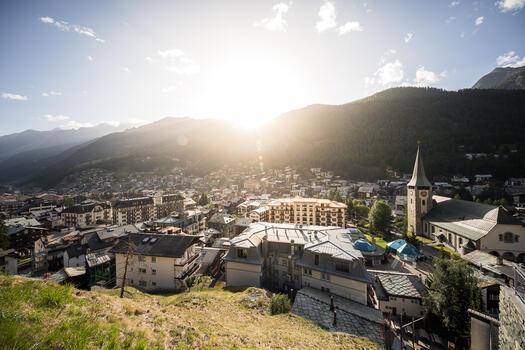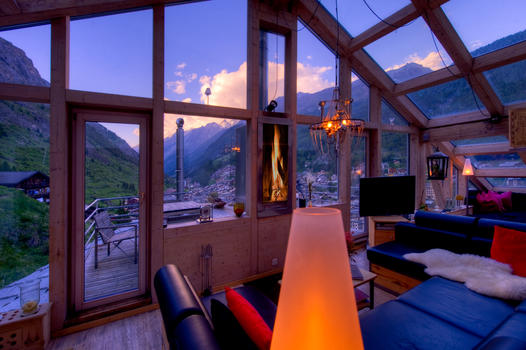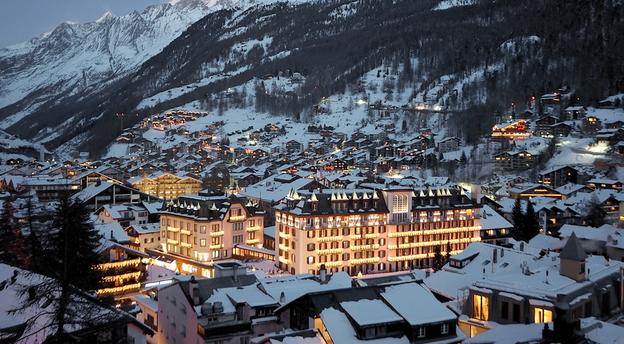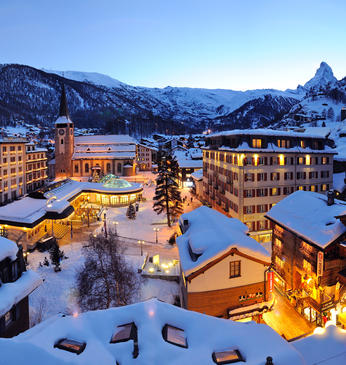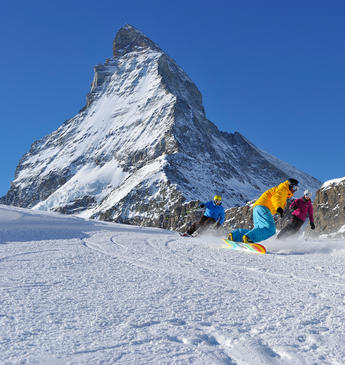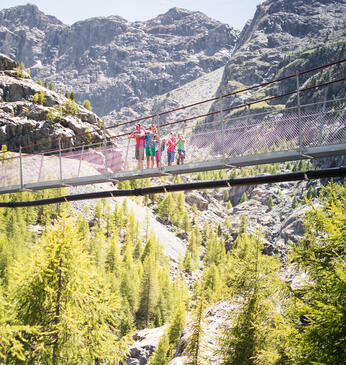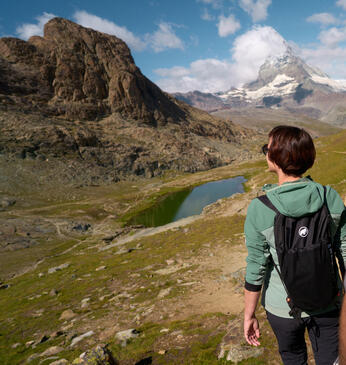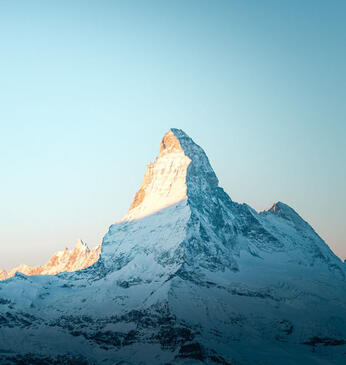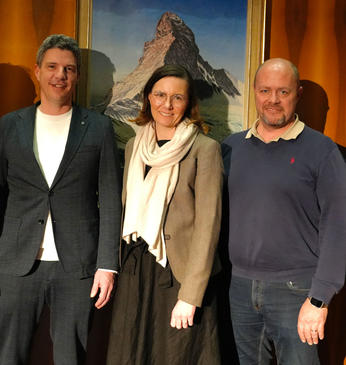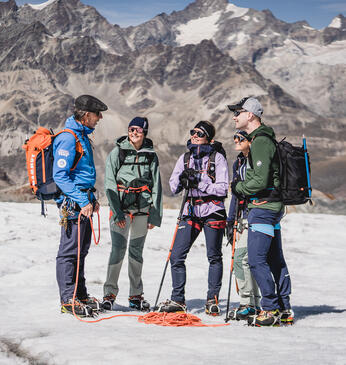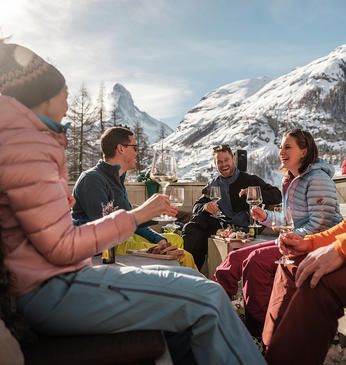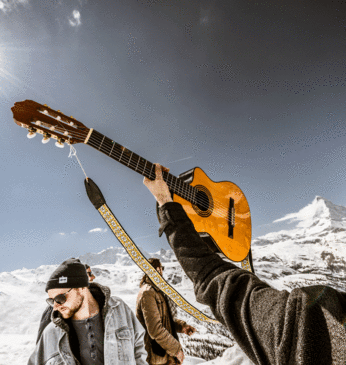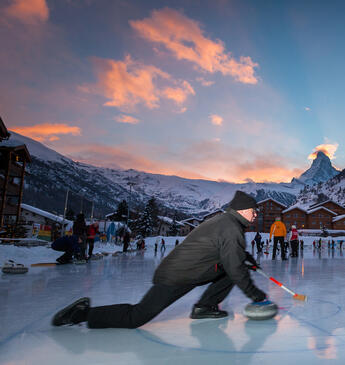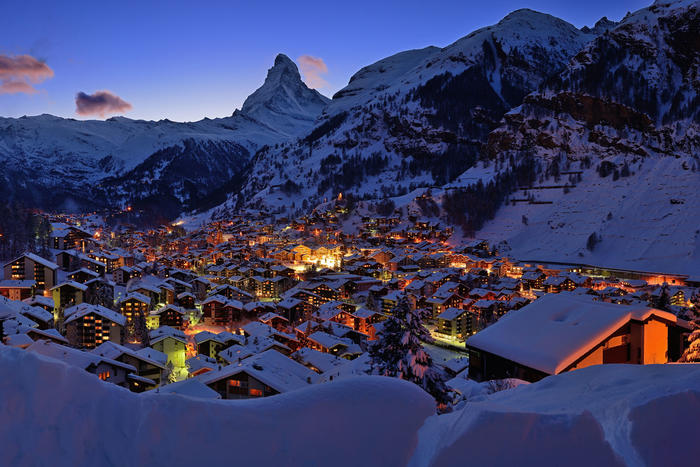
Despite intense competition, the Zermatt-Matterhorn destination is among the most successful tourist destinations in the Alpine region. This is thanks to many private initiatives as well as the public sector, which constantly invests in tourist offers and maintains them at a very high standard. The sourcing of the offers is ensured by both the ordinary inland revenues and the visitor’s taxes.
Levying Visitor’s Taxes
As in all of the tourist communes, the three Zermatt-Matterhorn destination communes – Randa, Täsch and Zermatt – levy a tax for services, which is collected and provided by the public sector. The taxes are based on the “Law on Tourism” (1) of Canton Valais from 9 February 1996 and regulated by the three communes in the Visitor’s Tax Regulations.
The visitor’s tax rate in the Zermatt-Matterhorn destination (2) is set by the voters of the communes of Randa, Täsch (3) and Zermatt (4) through an open vote at the community assemblies of the individual communes. The Visitor’s Tax Regulation of the mentioned communes entered into force on 1 November 2022.
With the tax, the tourist facilities, installations and development are promoted in the communal territories of Randa, Täsch and Zermatt. The application of the visitor’s taxes is used in the interest of those required to pay the visitor’s taxes contributions in accordance with the law. This serves the financing of the following three sectors:
- The operation of an information and reservation service
- On-site animation
- Construction and operation of installations which serve tourism, culture and sports
Where are the visitor’s tax funds allocated?
Specifically, the revenues from the visitor’s taxes in the Zermatt-Matterhorn destination are applied to functions, which directly or indirectly benefit the guests. Here are the most important examples: information, infrastructure, animation and events.
Information
- Brochures, such as the "Adventure in the Mountains", hiking maps, village map
- Internet – Content is also used for Tele-Info, various apps, eConcierge (Tweebie)
- Tourist information offices in Randa, Täsch and Zermatt
- Call Center
- Live Chat on the zermatt.ch website
- Internal communication (Newsletter, Zermatt Inside, SMS Service: closed roads, crisis communication)
- External communication: Newsletter for subscribers, social media platforms, image, video and journalist services for domestic and foreign online, print, radio and TV station media
- Information service for service providers in the destination (newsletter content, weather bulletins, etc.)
Infrastructure
The funds flow into the construction and maintenance of the listed offerings. Guests may use these facilities and offerings largely at no charge or for a reduced fee.
- Hiking trails
- Winter hiking trails
- Mountain bike trails
- Toboggan road
- Matterhorn Museum Zermatlantis
- Sports facilities (tennis, curling, ice rink, beach volleyball, ball games, etc.)
- Outdoor ice rink on natural ice
- Local recreation areas
- Fire places
- Suspended bridges
- Playgrounds
- Cross-country loipe (no charge for use)
- Relaxation benches
- Glacier garden at Dossen
- Botanic learning path "Botanischer Lehrpfad"
- Randa practice tow lift for skiing
- Wolli Adventure Part at Sunnegga / Wolli Park for Beginners Sunnegga
- Via ferrata, climbing hall
- Toboggan Täsch trail
- Maintaining tourism highlights: Mountaineers’ cementery, Walk of Climb (Plaques with the names of the first ascenders of the Matterhorn along the Bahnhofstrasse)
- Measures to beautify the village, such as flower decorations, flags, Christmas lighting
Animation
- Guided Village tour
- Children’s animation with Wolli and activities (baking, crafts, etc.)
- Wolli summer fun
- Folklore summer (live street music, traditional folklore music)
- “Geissenkehr” (Goats wander along the Zermatt Bahnhofstrasse mornings and evenings)
- National Holiday with fireworks
- Vita parcours (sports parcours with open-air gymnastics equipment)
Events
- Numerous events are supported by the Event Pool fund. This includes these major events (examples): Zermatt Unplugged, Zermatt Open-Air Theater "Freilichtspiele Zermatt", Patrouille des Glaciers, Zermatt Marathon, Swiss Food Festival, Zermatt Festival, Perskindol Swiss Epic Mountain Bike Race.
The destination communes have contractually delegated the collection of the visitor’s taxes to Zermatt Tourism. This incorporation organises, realises and monitors the collection process and prepares an annual public report about the correct application of these means. The financial inspector’s office of Canton Valais controls the handling process and the application of the taxes at regular intervals.
Who pays the Visitor’s Taxes?
- Guests through the billings by the hotel or holiday apartment owners
- Secondary apartment owners using an annual allowance fee per bed
-
Persons who stay overnight in the municipalities of Randa, Täsch or Zermatt and do not have their residence in one of these municipalities are liable to pay the visitor's tax.
Exceptions apply only to persons who are mentioned in Art. 3 of the visitor's tax regulations.
The Visitor’s Tax Rate
Since 1 November 2022, the following visitor's tax must be paid per person and overnight stay in the Zermatt-Matterhorn destination:
- 0 to 8.99 years: CHF 0.00
- 9 to 15.99 years: CHF 2.00
- From 16 years of age: CHF 4.00
